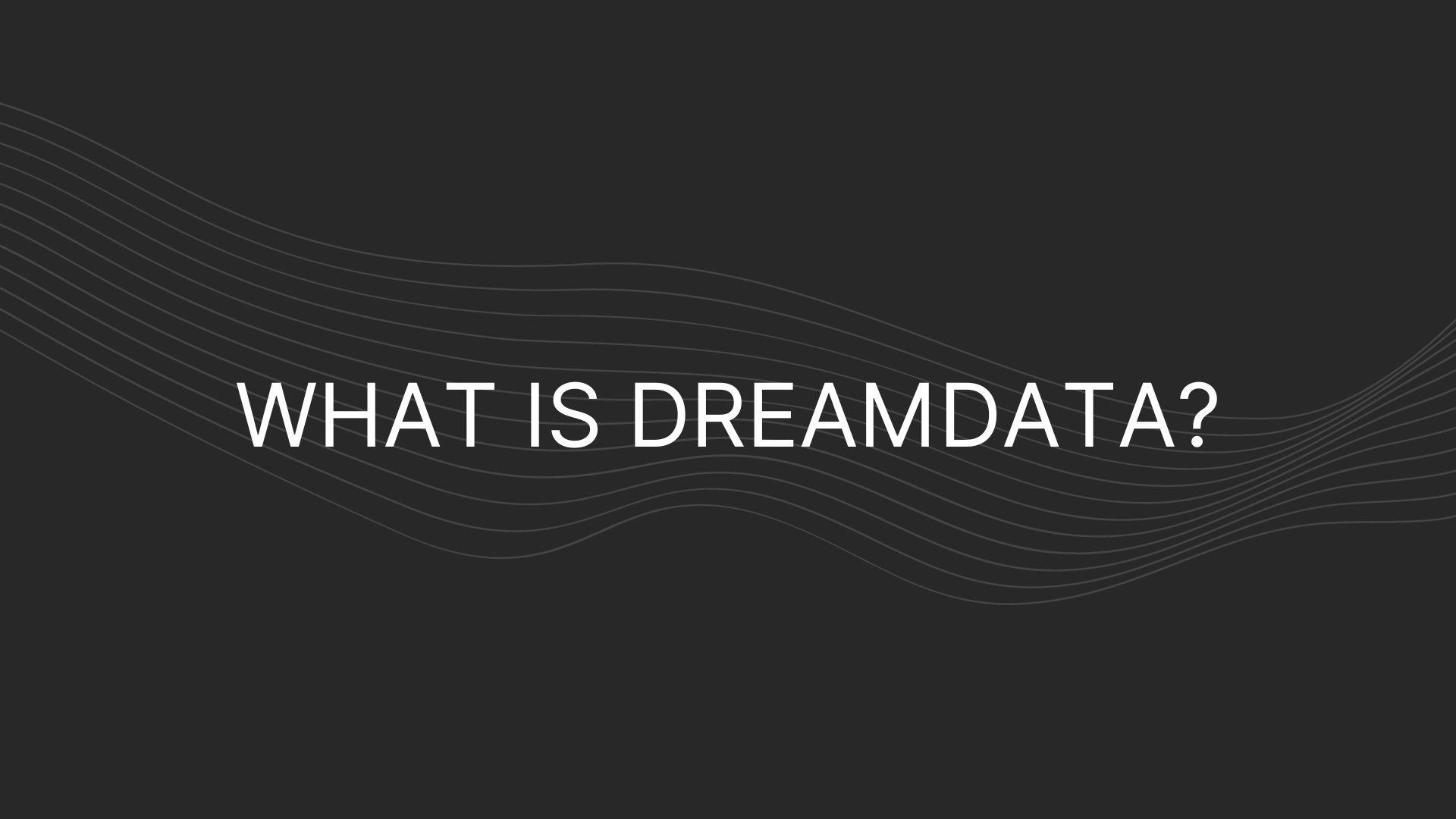DreamData is a revenue attribution company that helps businesses understand the impact of their marketing and sales efforts on revenue generation. It uses advanced analytics and AI technology to track customer behavior and attribute revenue to specific marketing channels, campaigns, and activities. Doing so provides businesses with actionable insights to optimize their marketing and sales strategies, improve ROI, and boost revenue growth. Furthermore, the platform serves to connect marketing and pipeline information to a company’s revenue database. So that concentrated teams and executives alike can make data-driven decisions in a single location.
What Is DreamData Used For?
With today’s competitive landscape, it is becoming more challenging for companies to understand the direction they need to take their business. Through DreamData, companies no longer have to worry about making the right decision. Teams across multiple departments can use DreamData for three purposes, which we will explore further down below.
- See complete B2B journeys.
- Cut costs and scale when appropriate.
- Understand critical attribution insights.
One of DreamData’s significant benefits is providing a comprehensive view of the customer journey. It helps businesses understand how each touchpoint contributes to revenue, providing insights into what works and what doesn’t. Moreover, the platform helps businesses to identify gaps in their customer journey and optimize their marketing and sales strategies accordingly.
Another critical use of DreamData is its ability to help businesses cut costs and scale when appropriate. By analyzing the data, businesses can see what’s working and what’s not, enabling them to optimize their marketing and sales strategies. Additionally, it provides insights into what’s driving revenue, helping businesses focus their efforts and allocate resources effectively.
The last use case of DreamData is that it provides valuable insights into critical attribution metrics, such as cost-per-lead (CPL) and customer lifetime value (CLTV). Through the help of these metrics, DreamData assists its client with helping to understand whether or not their marketing efforts are effective enough to generate recurring revenue.
Who Uses DreamData?
DreamData primarily serves business-to-business (B2B) companies around the globe. Serving companies like Uberall, Trengo, Sendcloud, Byrd, and more, this revenue attribution service helps to intertwine the marketing, revenue, and sales operations for all types of businesses.
Furthermore, on a micro-level DreamData does not just serve B2B companies. Inside them, they also serve teams of agencies, marketers, sales personnel, and those responsible for revenue operations.
- Agencies
- Marketers
- Sales Teams
- Revenue Ops
Agencies that work with B2B companies can use DreamData to gain a better understanding of their clients’ revenue sources. This highlights the customer journey, which allows agencies to optimize their campaigns and strategies for maximum effectiveness.
Sales personnel can use DreamData to gain insights into their customers’ behavior and preferences. DreamData provides a comprehensive view of the customer journey, enabling sales teams to identify areas where they can improve their strategies and close more deals.
Marketers can use DreamData to gain insights into the effectiveness of their campaigns. The platform gives out detailed attribution insights that help marketers understand which campaigns are driving revenue and which ones are not.
Revenue operations teams can use DreamData to gain insights into their organization’s revenue sources. As a service, DreamData enables teams to identify areas where they can optimize their strategies for improved revenue growth.
What Does DreamData Do?
The digital age today means that businesses have access to a vast amount of data, which can be overwhelming to manage and analyze. By leveraging DreamData, companies can make sense of digital, content, revenue, and performance data that helps them arrive at pertinent decisions.
- Digital Analytics
- Content Analytics
- Revenue Analytics
- Performance Attribution
Through these opportunities to learn more about analytics and attribution pertaining to marketing, pipeline health, and revenue, companies can then do what is necessary to increase revenue and profitability. Regardless of whether that consists of increasing engagement, converting users, or deploying a new marketing campaign.
How Does DreamData Work?
DreamData uses a unique algorithm that analyzes the entire customer journey, attributing revenue to each marketing effort, lead, and touchpoint. It integrates with various marketing and sales channels, collecting data about leads, conversions, and revenue. This is achieved through automated web crawlers and proprietary algorithms that track, analyze, and record data for companies to view.
- Customized Algorithm
- Popular App Integrations
- Automated Data Collection
DreamData Features
Given that DreamData is a comprehensive platform that offers an array of features to help businesses optimize their marketing efforts. With all of the powerful features listed below, DreamData is the ideal solution for businesses looking to take their marketing to the next level.
| Integrations | Event Tracking |
| B2B Attribution | Marketing Channels |
| Journey Mapping | Data Visualizations |
Its robust integration capabilities allow users to seamlessly connect with their favorite marketing tools and platforms. Event tracking allows businesses to monitor and analyze user behavior to gain valuable insights into their customer journey. The B2B attribution feature helps companies understand the impact of their marketing campaigns on their bottom line. The marketing channels feature provides a clear overview of how different channels are contributing to their marketing success. And, journey mapping allows businesses to visualize and understand their customer’s journeys from start to finish, while data visualizations provide a clear and concise way to present complex data.
What Does DreamData Integrate With?
DreamData integrates with several popular platforms that fall into categories like CRM, Traffic and Ads, Marketing Automation, Customer Success, Sales Tools, and Website Tracking. Each integration allows businesses to combine their data from multiple sources to gain get a better perspective of where they stand and to continue operating in a multi-tech fashion. Let’s take a look at some of the integration opportunities below:
Furthermore, aside from the ability to integrate with applications, DreamData also provides Destinations, which are opportunities for tech teams to integrate information from data warehouses, Reverse ETL platforms, and other business intelligence products.
Who Are DreamData’s Competitors And Alternatives?
In the revenue attribution space, there is a number of other competitors and alternatives to consider. For more information about some of the top alternatives, take a look at those key companies in the market space below.
- SharpSpring: This platform enables marketing and sales teams to create and deploy their own campaigns which are tracked with comprehensive metrics.
- Impact.com: Impact helps enterprise clients with building meaningful marketing relationships to further increase their revenue.
- ActiveCampaign: Allows businesses to harness data from email, social, and digital advertising campaigns to create personalized touchpoints.
- CallRail: Delivers real-time insights about marketing analytics to corporations.
DreamData Pricing
To purchase a DreamData subscription, there are three different pricing options to choose from – Free, Team, and Business.
| Free | Team | Business | |
| Pricing: | No cost. | $999/mo. | Custom |
The free plan gives companies the ability to handle up to 35,000 visitors per month. Additionally, they can track the behavior of their customers with ease. The complete digital analytics suite provides a comprehensive overview of all key metrics, allowing businesses to make informed decisions based on accurate data. Cost reporting from five paid sources ensures that businesses can track their marketing spend and optimize their budget for maximum ROI. The package also includes up to two-stage models, which provide a deeper level of insight into the customer journey.
In comparison to the Free plan, the Team package offers a different set of features. With a base price of 10,000 visitors per month, businesses can add more visitors for an additional $10 per 1,000. The package includes integration with CRMs like HubSpot and Salesforce, as well as up to 10 other sources. Not only that, but this package also allows for up to four-stage models, providing a comprehensive view of the customer journey. Furthermore, purchasers are also given the opportunity to evaluate account-based attribution with four multi-touch models that allow for a more targeted approach to marketing.
If you are an enterprise client, then the custom business package may be right for you. This package provides custom visitors per month, unlimited integrations, five-stage models, and more. In addition, the features are all-inclusive. Subscribers to this pricing plan are given access to the comprehensive suite of DreamData services and accessories to help their marketing teams succeed. For a better understanding of the price, interested parties are encouraged to schedule a call so that their personal needs are met.


